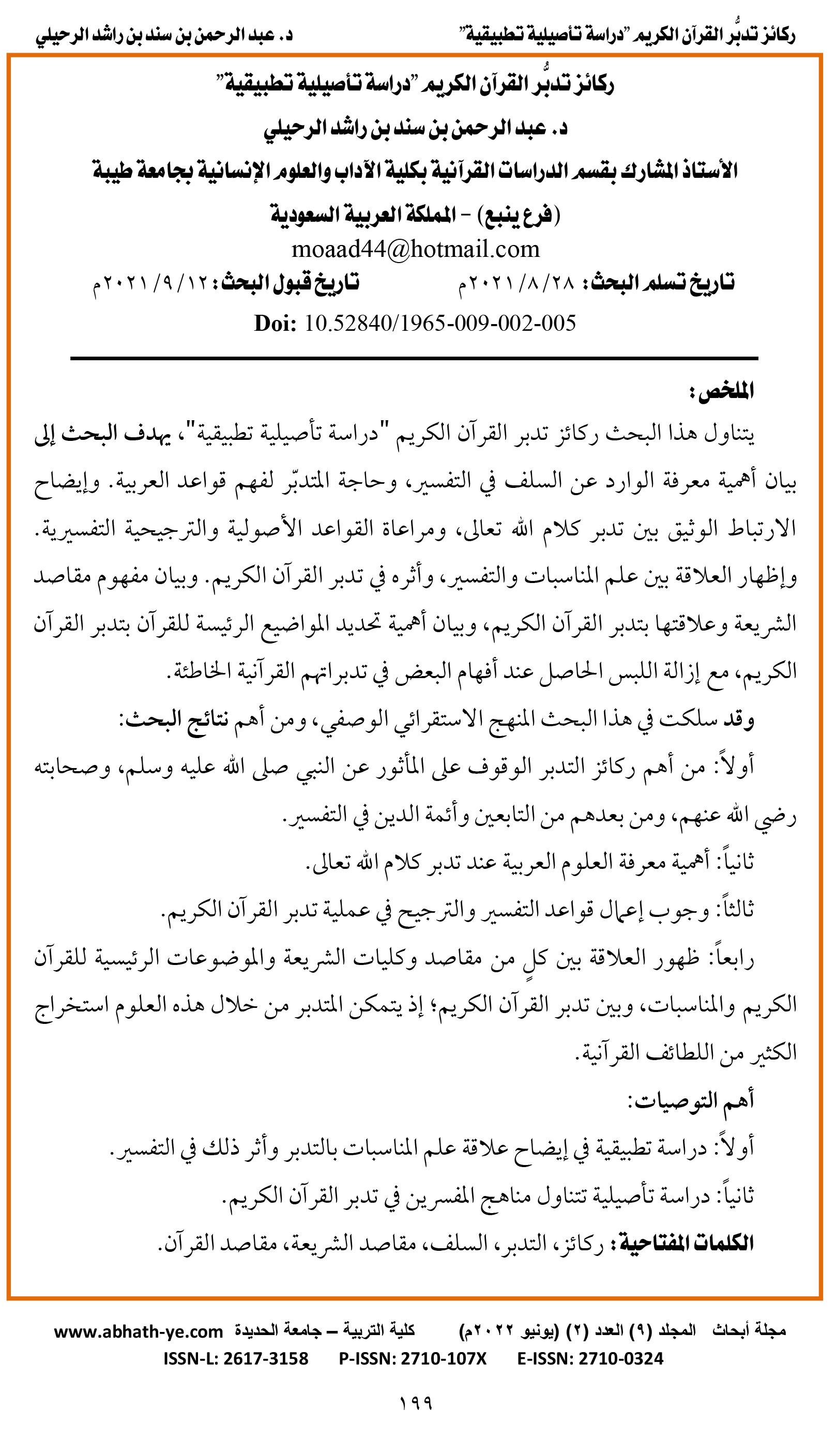Pillars of Contemplating the Holy Quran (An Applied Rooting Study)
Keywords:
pillars, contemplation, predecessors, intentions of Sharia, intentions of the Qur'anAbstract
The research deals with the Pillars of Contemplating in the Holy Quran (An Applied Rooting Study). It aims at highlighting the importance of knowing what descended from the predecessors in interpretation, and the need of the contemplator to know the rules of Arabic language. In addition, it also aims at clarifying the close connection between contemplating the words of Allah the Almighty and observing the rooting and balancing explanatory rules, as well as to show the relationship between the science of events and interpretation, and its effect on contemplating the Holy Quran. Moreover, the researcher proposes to explain the concept of the intentions of Shari'a and its relationship to contemplating the Holy Qur’an, clarifies the importance of identifying the main topics of the Qur’an in contemplating the Holy Qur’an, along with removing the confusion that occurs with some people when contemplating the Qur'an wrongly. To achieve the objectives of this research, the researcher followed the descriptive inductive approach. The most important results in this research were:
First: one of the main pillars of contemplation is to consider the tradition of the Prophet, may Allah's prayers and peace be upon him and his companions, may Allah be pleased with them, and those after them among the followers and imams of religion in interpretation.
Second: the importance of knowing Arabic sciences when contemplating the words of Allah Almighty.
Third: the necessity of employing the rules of interpretation and balancing in the process of contemplating the Holy Qur’an.
Fourth: revealing the relationship between each of the intentions and totalities of Sharia, the main topics of the Holy Quran and events and contemplating the Holy Quran, as a contemplator can elicit a lot of Qur'anic gifts through these sciences.

Downloads
Published
How to Cite
Issue
Section
License
Copyright (c) 2022 ِabhath Journal for the Humanities

This work is licensed under a Creative Commons Attribution 4.0 International License.
- البحوث المنشورة في المجلة مرخصة بموجب ترخيص (CC BY 4.0) Creative Commons Attribution 4.0 الدولي.
- تسمح المجلة بإعادة نسخ وتوزيع ونقل العمل لأي وسط أو شكل لأي غرض.
- تسمح بالتعديل والتحويل، والإضافة على العمل مع نسبة ذلك إلى المؤلف.
- حقوق النشر يحتفظ بها الباحثون.




